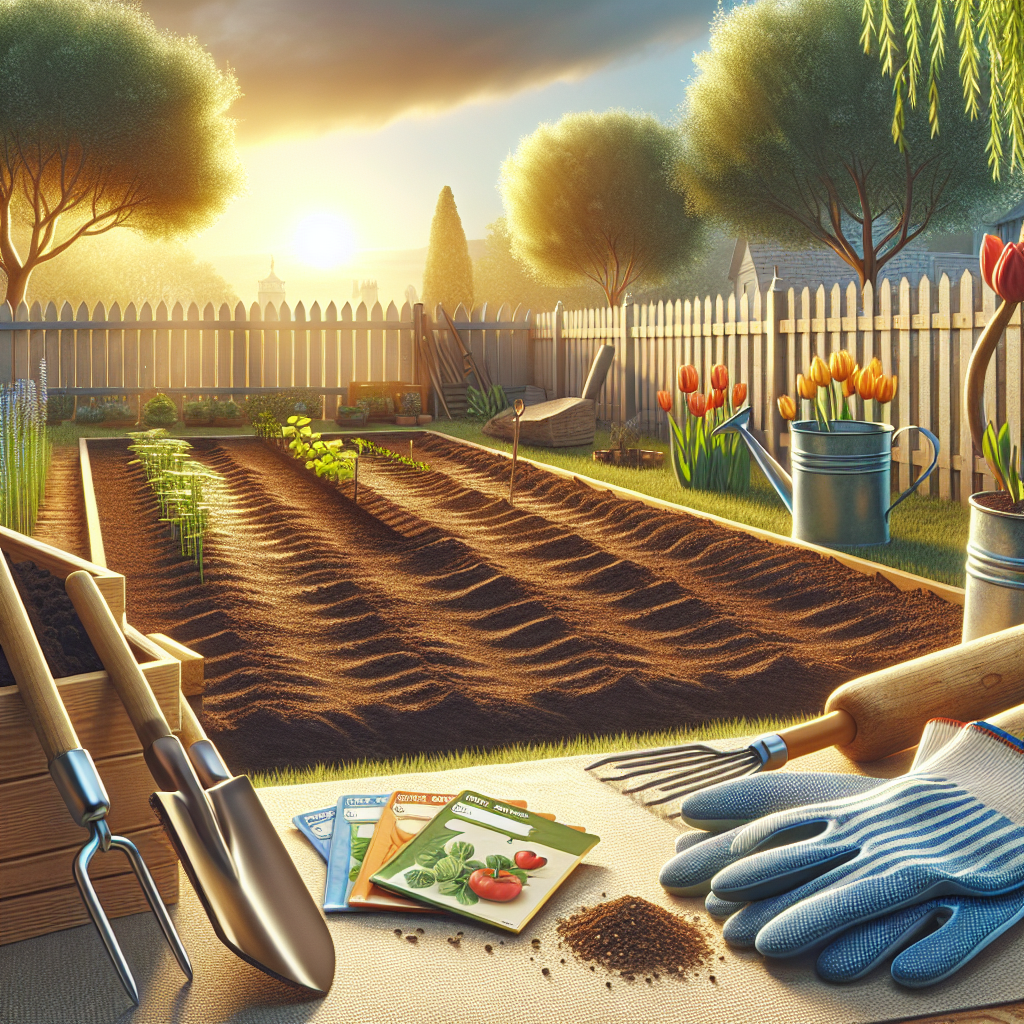Steps to Prepare Your Backyard for a Garden
Are you dreaming about a backyard bursting with vibrant flowers, succulent vegetables, and lush herbs? Whether you’re a novice or seasoned green thumb, preparing your backyard for a garden is an adventure worth undertaking. Transform your outdoor space into a serene oasis with a little know-how and some elbow grease. Follow these essential steps to cultivate a thriving garden sanctuary that’s ready for planting.
Step 1: Evaluate Your Space
Before you get your hands dirty, take the time to assess your backyard. Consider the following:
- Sunlight: Track the sunlight patterns in your yard. Most vegetables and flowers require full sun, meaning at least 6-8 hours of direct sunlight daily.
- Soil Quality: Analyze your soil type (clay, sand, silt, or loam) and pH level. Kits are available at garden stores or through online retailers.
- Drainage: Identify any drainage issues. Puddles that linger for hours after rain suggest that you might need to improve soil drainage or consider raised beds.
Step 2: Design Your Garden Layout
Sketch a blueprint of your desired garden. Keep taller plants to the back to prevent shading, and consider ease of access for watering and maintenance. Companion planting can also be beneficial — some plants grow better together, providing mutual support or pest control. The Old Farmer’s Almanac offers a guide to companion planting.
Step 3: Clear the Land
Begin preparing the soil by clearing out any weeds, rocks, or debris. If you’re dealing with an area that’s overgrown with grass, consider using a sod cutter for quick removal. The goal here is to start with a blank slate, making way for nutrient-rich soil where your plants can flourish.
Step 4: Amend the Soil
The health of your plants is directly related to soil quality. To boost nutrient content, incorporate organic matter like compost, aged manure, or peat moss. Experts recommend working these amendments into the soil at least 6 inches deep. If you have sandy soil, compost can help retain moisture; for clay soil, it can improve drainage.
Step 5: Plan for Watering
Efficient watering is crucial for a successful garden. If your garden isn’t near an outdoor faucet, consider installing a drip irrigation system or soaker hoses. These methods provide water directly to the roots, minimizing evaporation and preventing leaf diseases. Watering early in the morning is the ideal time, as it allows for moisture absorption before the heat of the day.
Step 6: Select the Right Plants
Choose plants that will thrive in your backyard’s conditions. Local garden centers typically sell varieties suited to your climate zone. If starting from seed, carefully review the packaging for necessary growing conditions. Remember to plan for mature size to avoid overcrowding, which can lead to disease and poor yields. You could also consult the USDA Plant Hardiness Zone Map to determine what plants are best for your region.
Step 7: Protect Your Garden
Critters and pests can quickly undo your hard work. Consider physical barriers, such as fences, to keep out rabbits and deer. Netting may deter birds from feasting on your berries, and mulch can prevent weeds and retain soil moisture. Always opt for eco-friendly pest control solutions to minimize harm to beneficial insects and the environment.
Step 8: Set a Maintenance Schedule
Regular care is essential for a flourishing garden. Plan a schedule for weeding, pruning, and harvesting. Being attentive to your garden’s needs can prevent a multitude of problems and ensure bountiful blooms and harvests.
Step 9: Gather Your Tools
Equip yourself with the proper tools for success. Essential gardening tools include:
- A quality spade or digging fork
- Pruners or shears
- A sturdy hoe for weeding and shaping soil
- A wheelbarrow for transporting soil and compost
- Gloves to protect your hands
You can find a comprehensive gardening tool kit online, which conveniently bundles the basics you’ll need.
Step 10: Be Patient and Enjoy the Process
Finally, understand that gardening is a journey. Not everything will go according to plan, and that’s perfectly okay. Savor the process and learn from the successes and setbacks. As your garden grows, so too will your skills and the intrinsic joy that comes from nurturing life from the soil.
Creating a garden in your backyard can be a rich and rewarding experience that offers not just bounty, but also beauty and tranquility. By following these steps and being mindful of best practices, you lay the foundation for a garden that’s bound to be a source of pride and pleasure for years to come.
Remember, the most important step is just to begin. Happy planting!
We hope you find these tips useful as you embark on your gardening journey! If you have any questions, leave a comment down below or reach out to us directly. Be sure to subscribe to our newsletter for more expert gardening advice and exclusive content right in your inbox. Happy gardening!


